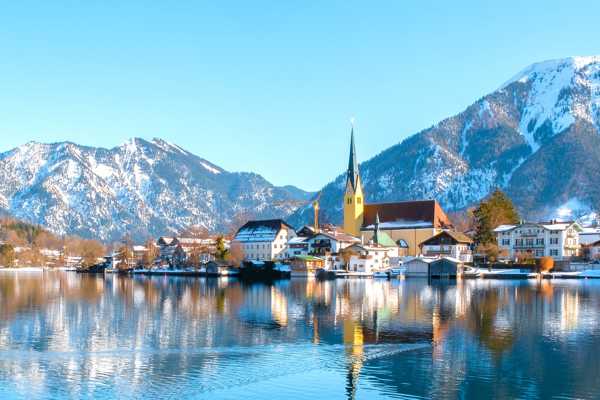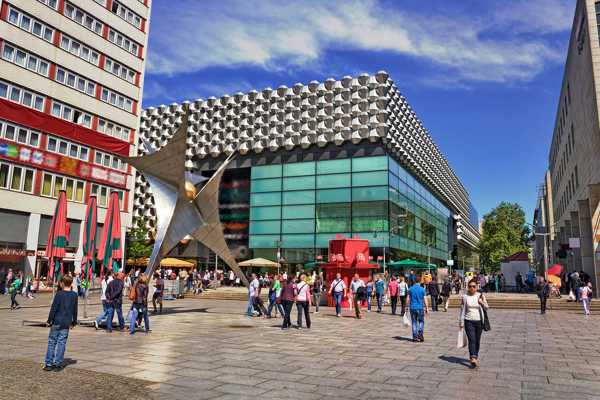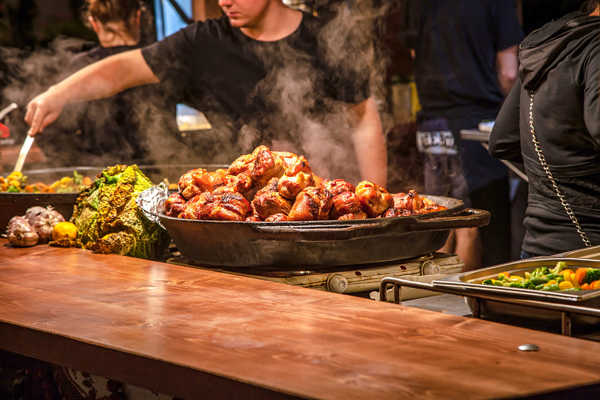The Romantic Road in Southern Germany passes through some of the most astounding landscapes the country has to offer. Loosely based on an old Roman route, it covers about 350 km of Bavarian countryside, starting from Würzburg in the north towards Füssen by the Austrian border.
Along this scenic road trip, you can stop at the only 3 cities in Germany that still have their medieval city walls intact. You can also see famous sights like the Neuschwanstein Castle and Rothenburg’s Plönlein. Best of all, you can enjoy quintessentially German scenery and the renowned Bavarian hospitality as you follow the iconic brown roads signs that point the way.
- 1
Würzburg
Enjoy classical buildings and dry wines

The historical city of Würzburg is packed with beautiful buildings, from the Würzburger Residenz in the town centre to the Marienberg Fortress that watches over it. The medieval bridge spanning the river Main is also worth seeing, as is the Romanesque cathedral. There’s a lot of variety among the many old churches and religious buildings in the city.
One of Würzburg star attractions is the fact that it’s the capital of one of Germany’s largest wine regions – Franconia – which is famous for its dry white wines. You can also sample the Würzburger Hofbräu pilsner and pizza from Germany’s oldest pizzeria in this quaint city.
Kort - 2
Rothenburg ob der Tauber
Look for one of Germany’s most photographed streets

Rothernburg is most famous for its pristine medieval old town, which looks like a film set for a period drama. In particular, you should look out for Plönlein, a former marketplace from which you can see both the Siebers-gate and the Kobolzeller-gate – it’s one of the most photographed spots in Germany, and you’ll see exactly why.
Other than pretty streets, the town boasts an impressive selection of museums. Be sure to try the local pastry while you’re there, too. The Schneeball is a deep-fried dough ball, covered in sugar to make it look like its namesake – a snowball.
Kort - 3
Dinkelsbühl
Visit in July for one of Germany’s oldest festival plays

Beautiful Dinkelsbühl, spanning the river Wörnitz, is considered one of the best preserved medieval towns in Germany. Known for its rich and lively past, the imposing tower of St. George’s Minster dominates the skyline and is the largest hall church in the country. There’s no shortage of other outstanding historical buildings, ranging from the Deutsches Haus to the House of the Teutonic Order.
A recreation of Dinkelsbühl’s storied past takes place during the 3rd week of July. The Kinderzeche festival recounts how the children of the city saved the place from destruction at the hands of the Swedes during the 30 Years War in 1632.
Kortmynd frá Kimba Reimer (CC BY 2.0) breytt
- 4
Nördlingen
The diamond-walled cities

Nördlingen is the quietest of 3 medieval walled cities along the Romantic Route in Southern Germany. Perhaps the most remarkable feature of its charming narrow streets is that the walls contain millions of tiny diamonds. They were formed when a kilometre-wide meteor created the Nördlinger Ries impact crater, which the city is settled in.
Besides the various museums and the 90-metre-tall steeple of St. George’s Church in the old town, Nördlingen’s past can be seen at the Ofnet Caves, just southwest of the city. They were found to contain human remains from the 7th century BC – some of the first people to populate this picturesque region.
Kortmynd frá Rictor Norton & David Allen (CC BY 2.0) breytt
- 5
Augsburg
Dive into the history of one of Germany’s oldest cities

Augsburg is one of the oldest cities in Germany, with a beautiful old town hall at its heart. Don’t forget to climb up the neighbouring Perlachturm – a bell tower built in 989, which offers great views of the city. The Fuggerei is also worth a look, being the oldest social housing estate in the world.
The stories surrounding the ancient sites are just as fascinating as the buildings themselves. On your walks around the charming city streets, look out for the “Stony Man” – a life-sized statue, supposedly of a baker who saved the city from a siege during the 30 Years War with a clever deception.
Kort - 6
Füssen & Schwangau
Step inside fairy-tale castles in the Alpine foothills

The area around the town of Füssen and the neighbouring village of Schwangau is a picture-perfect example of an alpine settlement. Right by the border with Austria, at the southern end of the Romantic Road, the area is dotted with crystalline lakes and fairy-tale-like castles.
Neuschwanstein Castle is undoubtedly the highlight of the area. Built for King Ludwig II of Bavaria, its iconic design and striking clifftop location was made even more famous when it appeared in the movie Chitty Chitty Bang Bang. The nearby Hohenschwangau Castle receives fewer visitors, but is no less striking.
Kort



















